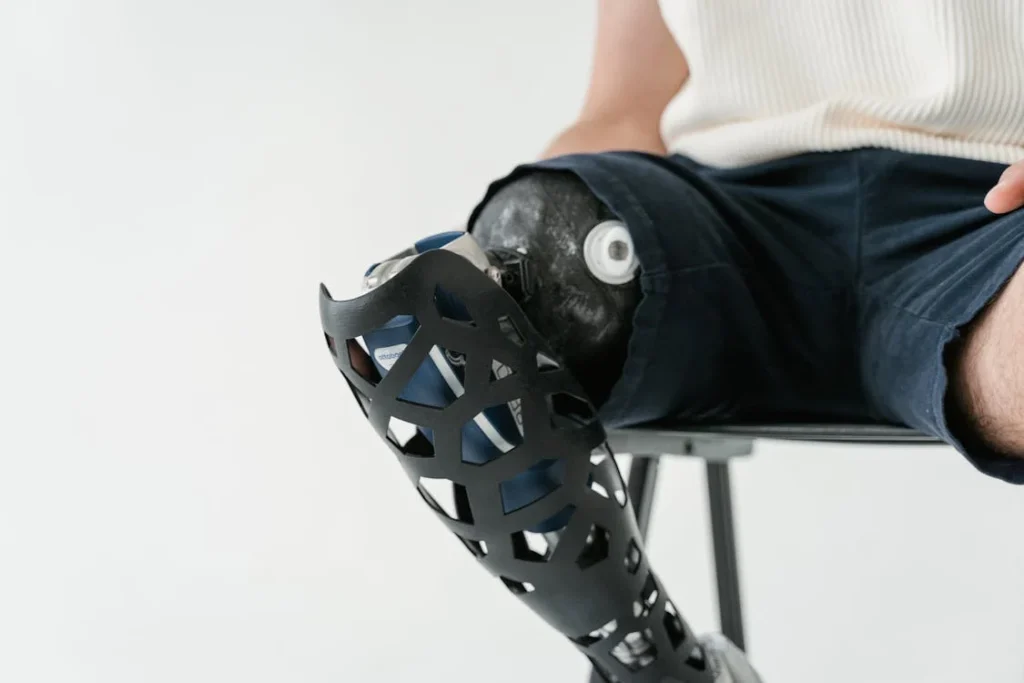When someone loses a limb, the first thing they often want is to move again—to walk, to hold something, to feel steady. That desire is powerful. But behind the scenes, there’s a hidden science that makes it possible: prosthetic biomechanics.
This field might sound complicated. It has a big name, and it involves bones, joints, movement, and technology. But at its heart, prosthetic biomechanics is all about helping the human body move in a natural and comfortable way using an artificial limb.
It’s the bridge between the body and the prosthesis. It’s what turns a tool into something that feels like a part of you.
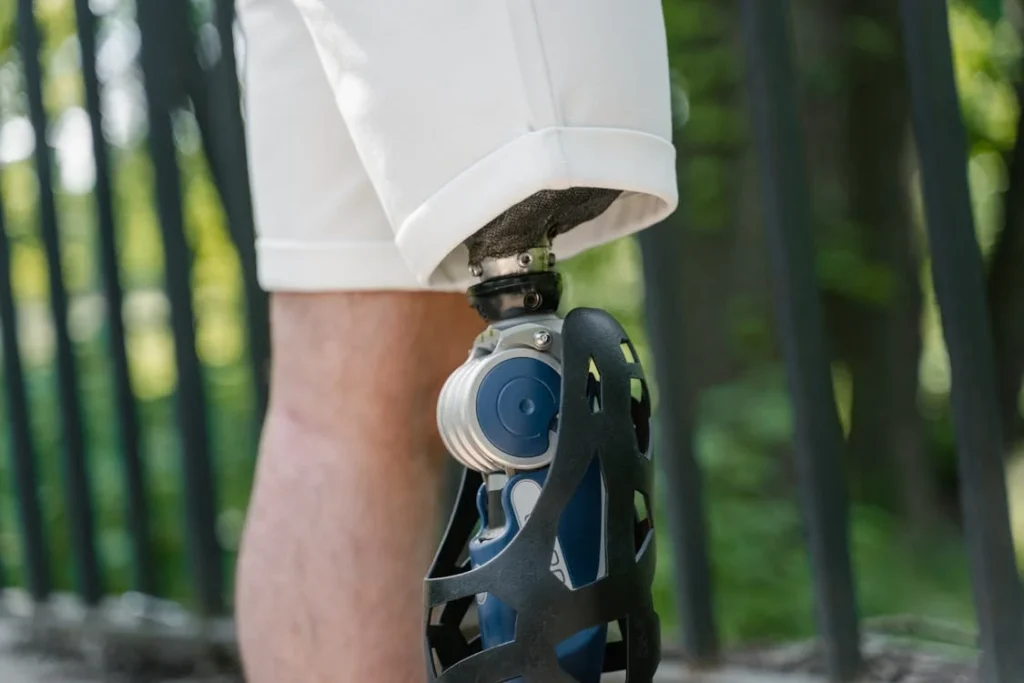
Understanding the Basics of Prosthetic Biomechanics
What Is Biomechanics?
Biomechanics is the science of how the body moves. It looks at how your bones, muscles, and joints work together every time you sit, stand, walk, or reach for something.
When a part of the body is missing—like a hand, leg, or foot—biomechanics becomes even more important.
That’s because the body still wants to move the same way it used to. But now, without all the original parts, it has to find new ways to do the same actions.
That’s where prosthetic biomechanics comes in. It focuses on how to design and adjust artificial limbs so they work with your body, not against it.
The Connection Between Body and Prosthesis
Think of a prosthesis like a puzzle piece. It needs to fit not only in shape, but also in function. If it’s too heavy, the person will feel tired quickly.
If it moves awkwardly, it can cause back pain or sore joints. And if it doesn’t match the way the person naturally moves, it may never feel right.
Prosthetic biomechanics is all about solving these problems. It studies how the artificial limb connects to the rest of the body.
It asks questions like: How does the body carry weight now? How do the joints move when walking? Where does the pressure go when standing or running? With the right answers, the prosthesis can be shaped and adjusted to make every movement smoother and more natural.
Why Balance and Alignment Matter
When you walk with two natural legs, your body is balanced. Your hips, spine, and shoulders work together like a team. But when a leg is lost, that balance is changed.
The body starts to lean more to one side or shift weight in strange ways. This can cause strain, joint pain, or even falls.
That’s why alignment is one of the first things studied in prosthetic biomechanics. The goal is to place the prosthesis in just the right spot, at just the right angle, so the whole body stays in balance again.
A well-aligned prosthetic leg, for example, helps someone walk straight without a limp. It makes each step feel lighter and more natural.
For arms and hands, it’s about how the shoulder and elbow move, how the hand can grip, and whether small motions like turning a key or holding a spoon feel natural.
Each movement is broken down and studied to make sure the prosthesis supports, rather than hinders, the user.
The Role of Force and Pressure
Every step you take, every time you pick something up, your body creates pressure and force. Your joints feel it. Your skin feels it. Your muscles respond to it.
With a prosthesis, that pressure is no longer shared evenly. Some parts of the body take more stress. If that pressure isn’t managed well, it can lead to pain, bruising, or even skin damage.
Biomechanics helps spread out that pressure in smarter ways. It shows where padding should be added. It helps decide how rigid or soft the materials should be.
It even tells us which part of the foot should touch the ground first, and how long each part of the foot should stay on the ground during walking.
This makes a big difference in comfort. A person with a well-designed prosthesis doesn’t just move better—they feel better too.
Muscle Memory and Learning to Move Again
After limb loss, the body doesn’t forget how to move. The brain still sends signals the same way it used to. But now, those signals need to go somewhere new.
The prosthesis needs to become part of the movement system. That takes time, patience, and the right training.
Biomechanics helps therapists understand how to guide that learning. It shows which muscles need to be strengthened, which movements need to be practiced, and how to create new patterns that feel smooth and easy.
This is especially important for children or those who lost a limb suddenly—they often need to relearn simple things like walking, reaching, or sitting without strain.
The goal is always the same: to help the body move in a way that feels safe, natural, and pain-free.
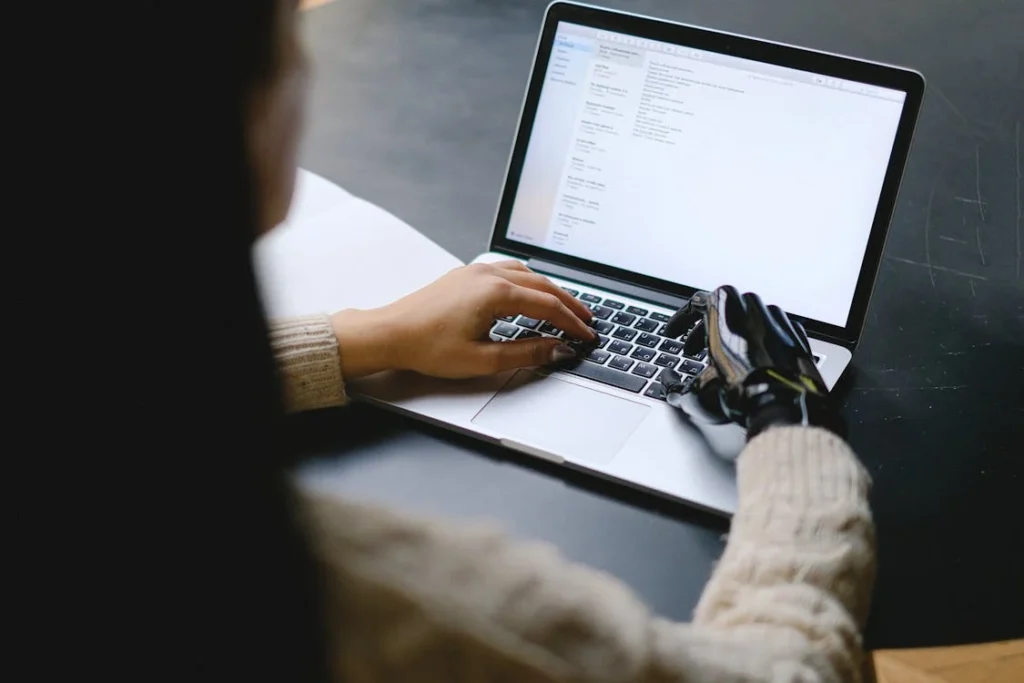
How Prosthetic Biomechanics Improves Daily Life
Making Everyday Movements Feel Natural
Prosthetic biomechanics focuses on how small details affect big outcomes. Something as simple as walking up a stair, holding a cup, or tying a shoelace depends on precise motion.
When the prosthetic is not aligned with how the body naturally moves, these small actions can become tiring or frustrating. But when it’s adjusted using biomechanical principles, those same actions start to feel easy again.
For example, in a prosthetic leg, the angle of the ankle, the stiffness of the foot, and the way the socket fits around the thigh all change how a person walks.
If those pieces are dialed in correctly, walking feels smooth. If not, the person might feel off-balance, use more energy, or develop back pain over time.
The same goes for upper-limb prosthetics. Gripping a pencil, turning a page, or using a fork depends on precise joint movement and muscle control. With the right setup, these movements become quicker and less stressful.
Biomechanics doesn’t just improve how someone moves—it makes daily life feel less like a chore and more like normal life again.
Reducing Fatigue and Preventing Injury
When a prosthesis is poorly designed or fitted, the body tries to make up for it. A person might lean more to one side, take shorter steps, or tense certain muscles without even realizing it.
Over time, these habits lead to exhaustion, joint wear, and even injury.
Biomechanical adjustments aim to prevent that. They reduce extra effort, spread out forces, and encourage healthier movement.
As a result, users don’t just get more comfort—they also protect their joints, muscles, and spine in the long run.
This is one reason why people with well-fitted, biomechanically sound prosthetics often walk longer distances, climb stairs more easily, or take part in sports or dancing.
They’re not just using the prosthetic—they’re using it in a way that supports their whole body.
Supporting Children and Growing Bodies
Children are in constant motion—and constant growth. What fits them well today might not work next month.
Prosthetic biomechanics becomes even more important for them. Every change in height, weight, or walking pattern can affect how the limb fits and functions.
Therapists and prosthetists monitor children closely, using biomechanical tools to update the design as needed. They track how the child stands, walks, runs, and even plays.
They make adjustments not just for comfort, but to guide the child’s body to grow evenly, stay strong, and avoid long-term issues.
The goal is not only to support movement, but to make sure the child develops confidence and independence with every stage of growth.
Adjusting for Different Lifestyles
Every person has their own needs. A student, an office worker, a farmer, or an athlete will all use their prosthesis differently. Some people are on their feet all day.
Others need fine hand control. Some prefer light, minimal limbs. Others need strong, supportive designs.
Biomechanics helps create these personalized setups. It’s not a one-size-fits-all science. Instead, it listens to what the body needs and what the person wants, then finds a middle ground that works.
Whether it’s adjusting stride length, pressure points, or how much flexibility the prosthesis has, it’s all about making the limb match the life—not the other way around.
This flexibility is one of the reasons modern prosthetics are so much more comfortable and useful than older ones. And biomechanical science is what makes that progress possible.
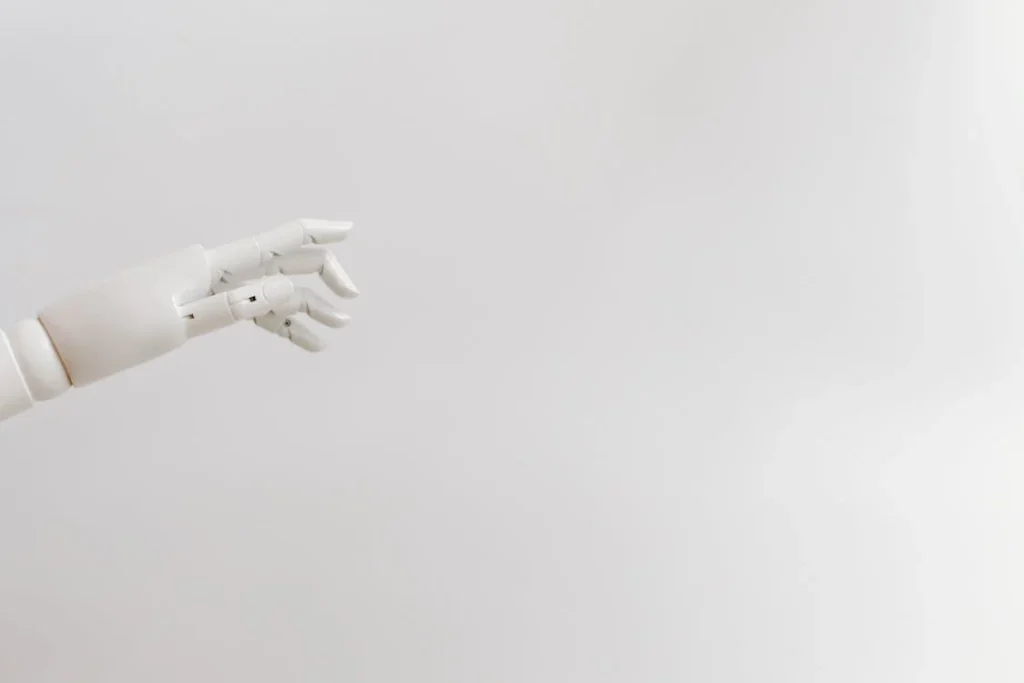
The Science Behind Prosthetic Design
How Gait Analysis Guides Design
Gait analysis is the study of how someone walks. In prosthetic biomechanics, it’s one of the most important tools. When someone walks, a lot happens in just a few steps. The hips shift, the knees bend, the ankles absorb shock, and the arms move to balance. Every joint plays a role.
After limb loss, this natural rhythm is disrupted. Gait analysis helps experts see where the balance is off, where force is being overused, and where adjustments need to happen.
Cameras, pressure sensors, and motion trackers show how the body moves from all angles. This helps prosthetists know what to fine-tune.
Maybe the prosthesis is too long or too short. Maybe the socket is pressing in the wrong place. Maybe the person is taking uneven steps because their weight isn’t balanced.
These issues can be small but lead to big problems over time—like pain, tiredness, or even falls. Gait analysis helps catch them early and fix them with precise changes.
Materials That Work With the Body
The materials used in a prosthesis play a big part in how well it works with the body. A leg made of stiff material may provide strength but can feel jarring when it hits the ground.
A hand that’s too soft may not grip well. Biomechanics helps decide what balance of strength, flexibility, and shock absorption each part needs.
Modern prosthetics use a mix of lightweight metals, plastics, carbon fiber, and silicone. These are chosen based on how they interact with muscle movement and ground contact.
Carbon fiber, for example, is often used in foot parts because it can store and release energy. That makes walking feel more natural, almost like a spring in each step.
By understanding how the body moves and absorbs pressure, biomechanics guides which materials go where. This ensures not just durability, but also ease of use and comfort.
Socket Design and Fit
The socket is the part of a prosthesis that connects to the body. It must be secure, comfortable, and shaped perfectly to the person’s residual limb. This is often the trickiest part to get right, because no two bodies are alike.
Biomechanics helps guide the socket design. It ensures the socket doesn’t press too much on sensitive areas and supports the right muscle groups.
It also considers how weight is carried during different movements—like standing still, walking uphill, or sitting down.
A good socket feels snug but not tight. It moves with the body but stays in place. When it’s designed using biomechanical data, users report less skin irritation, fewer pressure sores, and more confidence in daily use.
Controlling Movement With the Right Components
The joints in a prosthesis—whether it’s an elbow, wrist, knee, or ankle—can be mechanical, hydraulic, or even computerized.
Choosing the right kind depends on how the user moves, how strong they are, and what their goals are.
For example, a child might need a simple joint that allows easy bending. An adult who hikes may need one that adjusts automatically to uneven ground.
A worker who lifts heavy objects might need something strong and supportive.
Biomechanics helps figure out these needs by studying the person’s daily movements. It also helps set the right resistance, angles, and speeds for each joint.
This way, the prosthesis responds in a natural, controlled way—just like a real limb would.
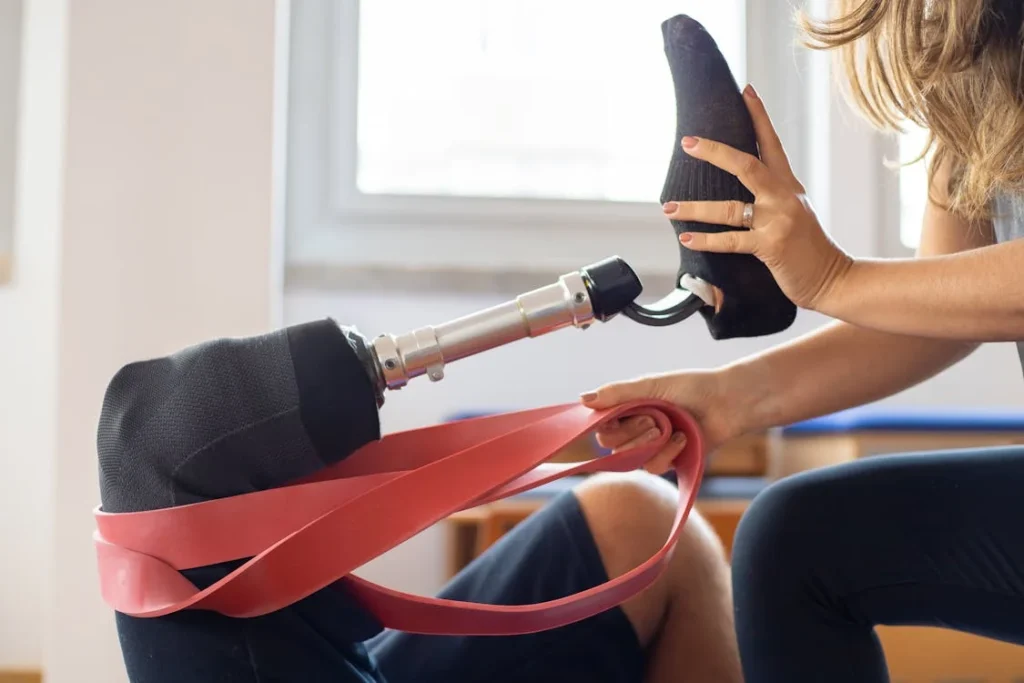
Training the Body to Work With the Prosthesis
The Learning Curve After Fitting
Once a prosthesis is fitted, the real work begins. Even the most advanced prosthetic limb won’t function properly if the body isn’t trained to use it.
That’s where therapy and biomechanics meet again. After all, it’s not just the device that matters—it’s how the body and mind learn to use it together.
The first few weeks after fitting can feel strange. Movements may seem clumsy. Some people walk with a slight limp or drop things more often than expected.
This is completely normal. The body is learning a new rhythm, and the brain is building new connections to control this new tool.
Biomechanics helps therapists decide how to structure these early lessons. They watch how each joint moves and where pressure builds up.
They adjust posture, weight shifts, and stepping patterns. Over time, these changes become habits, and the person feels more stable and confident.
Building Strength in the Right Areas
Prosthetic use requires effort. Muscles that weren’t used much before may now need to work harder. The opposite can also be true—some muscles that were doing all the work before the prosthesis arrived now need to relax and let the device assist.
Biomechanics helps identify these shifts. If someone walks with one shoulder higher than the other, for example, they may need core strengthening or shoulder realignment.
If the hips tilt too much during a step, it might mean the glutes or trunk muscles need more support.
Therapists create custom exercises based on these needs. They help the body balance itself again so that no single muscle group carries more than it should.
This reduces tiredness, prevents injury, and makes the prosthesis feel more like a part of the body.
Teaching Movement Patterns Step by Step
Retraining the body happens step by step—literally. Each part of a movement is broken down and practiced until it feels automatic.
For walking, this might mean learning how to place the heel first, roll onto the toe, and push off evenly. For upper-limb prosthetics, it could involve practicing how to lift an object without twisting the wrist too much.
Biomechanics plays a big role here. It shows where the movement breaks down and why.
It also helps decide when the person is ready for the next challenge, whether that’s climbing stairs, holding a heavy bag, or picking up fragile objects.
Each small success builds trust between the person and their prosthesis. That trust is what turns a helpful tool into something that truly feels like a natural part of life.
Developing a Long-Term Routine
Using a prosthesis isn’t a one-time event—it’s a lifelong relationship. As the body changes with age, weight, or activity level, the way the prosthesis fits and functions will also need to change.
A person who becomes more active may need to switch components. Someone who gains muscle may need a socket readjustment.
Biomechanics helps guide these updates. It allows prosthetists to spot problems early—before they cause pain or wear-and-tear.
Regular check-ups, combined with gait assessments and body scans, help keep the device aligned with the person’s current needs.
More than that, biomechanics empowers users to take control of their own mobility. They learn to recognize signs that something’s off.
They know when to ask for adjustments. And they stay confident in their ability to move well, no matter what life brings next.
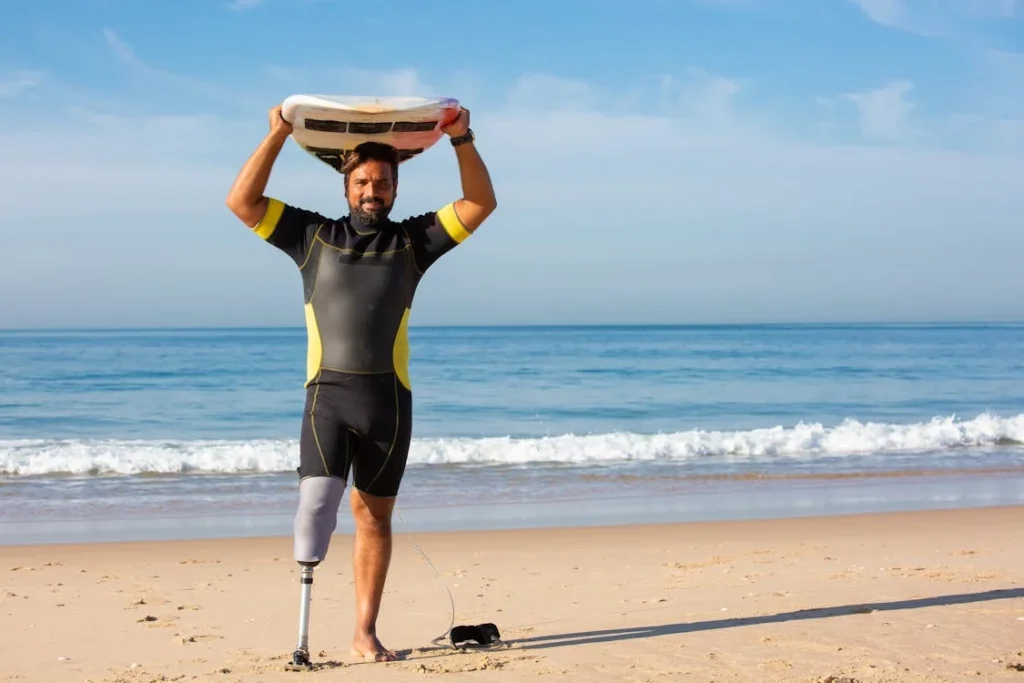
The Future of Prosthetic Biomechanics: Smarter, Adaptive Technology
From Passive Limbs to Intelligent Movement
Prosthetic limbs were once simple tools—rigid and passive. They helped with basic function, but didn’t adapt. That’s changing.
Today, biomechanics is teaming up with smart technology to create limbs that not only move but also respond to the body in real time.
This is where sensors, microprocessors, and machine learning enter the picture. These new-age prosthetics collect data as the user moves—speed, angle, pressure, and rhythm—and use it to make split-second decisions.
The result? A limb that adjusts itself based on where you’re walking, how fast you’re moving, or how much pressure you’re putting down.
For example, a smart prosthetic knee can slow down if you’re walking downhill, or give you extra support when going up stairs. It learns your walking pattern and modifies its resistance and response accordingly. This isn’t science fiction—it’s already happening.
Sensors That Talk to the Body
Sensors play a big role in this new wave of biomechanical design. These tiny devices are embedded in the prosthesis and detect changes in movement, pressure, and even muscle tension.
They send signals to the controller inside the limb, which then adjusts how the limb behaves.
Imagine walking across a rocky path. A traditional prosthetic foot might struggle to stay stable.
But a foot equipped with adaptive sensors can feel that uneven ground and adjust its position automatically, helping the user stay upright with much less effort.
This takes the idea of “natural movement” to a new level. Now, the prosthesis doesn’t just follow the user’s lead—it helps lead when needed.
The Rise of Myoelectric Control
Myoelectric technology is another big breakthrough in prosthetic biomechanics. It uses electrical signals from the user’s muscles to control movement.
When the brain sends a signal to a muscle—say, to close a hand—sensors pick up that signal and tell the prosthetic hand to close too.
This approach creates smoother, more direct control. The user isn’t pushing buttons or moving levers—they’re just thinking about the movement, and the limb responds. With practice, these movements become faster and more precise.
It also gives more freedom to perform complex tasks like tying shoelaces, using a phone, or even holding delicate items like an egg or a glass of water.
Data-Driven Personalization
One of the most exciting developments is the ability to collect and analyze usage data from smart prosthetics.
These devices can track how much a person walks, how often they use certain motions, and where strain or pressure builds up.
This data is gold for prosthetists. It helps them make fine-tuned adjustments, often before the user even notices discomfort.
It also helps in designing future prosthetics that are more efficient, more adaptable, and more in sync with real-life needs.
Over time, this makes each prosthesis feel more personal—less like equipment, and more like a natural extension of the person.
Smarter Prosthetics, Smarter Rehabilitation
These advanced technologies are also changing how rehab is done. Therapists can now use apps and wearable trackers to monitor progress outside the clinic. They can adjust therapy plans based on real-time data.
Some systems even use virtual or gamified environments to help children practice movements in a fun, engaging way from home.
The result is not just smarter prosthetics—it’s smarter rehabilitation. And it makes biomechanics an active part of every stage, from design to day-to-day living.
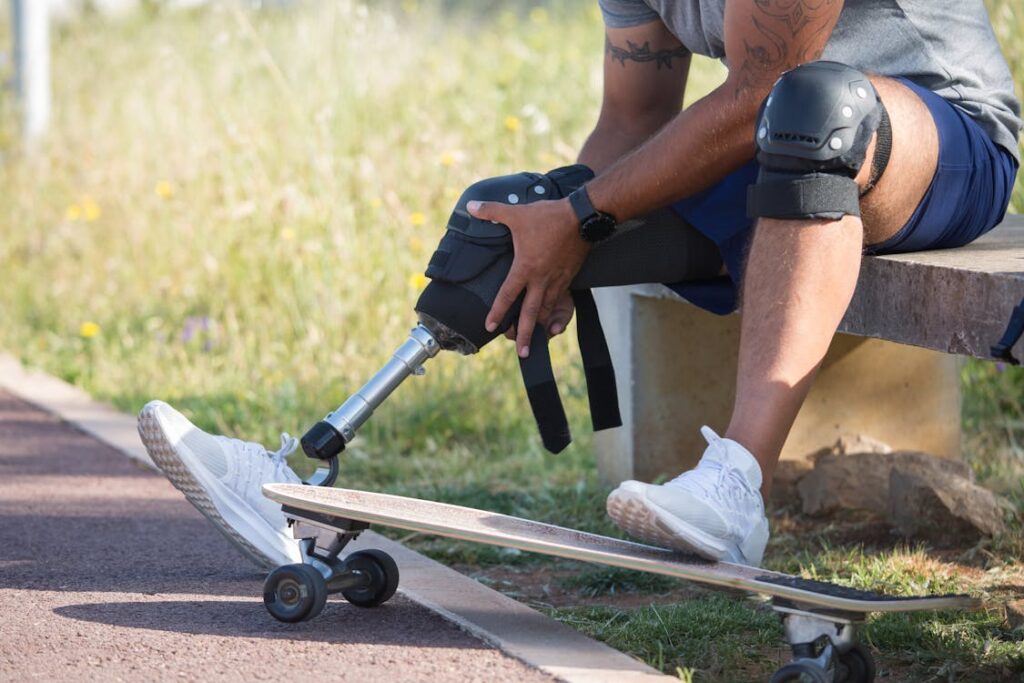
Adapting Biomechanics to Real Lives: Culture, Climate, and Daily Habits
One Size Doesn’t Fit All
Prosthetic biomechanics often starts in the lab—but it comes to life in the real world. And the real world looks very different depending on where you live.
In India, for example, daily life might include walking long distances, climbing stairs, crouching, or sitting cross-legged. These are not typical movements in Western countries, and most standard prosthetic designs don’t account for them.
That’s where localized biomechanics steps in.
Designers and prosthetists who understand these cultural movements build them into the prosthetic’s function. The ankle might need more rotation. The knee may need greater flexion.
The foot may need to handle uneven ground or dusty roads without slipping. Each of these adjustments is based on observing how the body moves in local environments—and modifying the prosthesis to match.
Biomechanics isn’t just about ideal posture in a clinic. It’s about natural, practical movement in a world full of stairs, slopes, and sidewalks.
Climate and Material Considerations
India’s climate adds another layer. Humid weather, extreme heat, and monsoon rains affect both the body and the prosthesis. Skin can sweat more, causing irritation inside the socket.
Metal components can rust. Rubber parts may degrade faster. These are not minor inconveniences—they can lead to real discomfort and even infection if not managed properly.
Biomechanics helps here too. It guides material selection and socket design to allow for better ventilation, faster drying, and reduced skin friction.
Some sockets are made with breathable fabrics or special liners that wick moisture away from the skin. Others are shaped to allow airflow in specific areas where sweating is common.
Understanding how the environment affects the body helps ensure the prosthetic works with the user, not against them.
Social and Emotional Movement Patterns
Biomechanics doesn’t stop at physical motion—it also considers how people behave in social settings. In many Indian homes and communities, there’s a deep value placed on sitting on the floor during meals, religious activities, or family events.
If a prosthetic leg doesn’t allow a user to sit comfortably in this position, it limits not just movement, but inclusion.
Designers use biomechanical insights to increase joint flexibility or create limb positions that mimic floor sitting. These changes may seem small, but they have a big impact on social participation and emotional well-being.
It’s also important to consider how the prosthesis looks. Some users feel more confident when the limb blends with their skin tone or matches their clothing style.
Prosthetics that align with local culture—both in form and function—often lead to greater satisfaction and longer-term use.
Gender-Sensitive Biomechanical Needs
Another important but often overlooked factor is gender. In many parts of the world, including India, girls and women may have different mobility needs and cultural roles.
For instance, they may be more involved in home-based tasks that require fine hand movement, crouching, or carrying loads. The biomechanics of their movement is shaped by these tasks.
A prosthesis designed without this awareness may hinder rather than help. But one that supports these unique movements—through lighter limbs, adjustable sockets, or more flexible joints—can improve not just function, but dignity and self-reliance.
Biomechanics gives us the tools to study these differences closely and build solutions that honor them, rather than ignore them.
Conclusion
Prosthetic biomechanics is more than science—it’s the art of understanding how real people move, live, and adapt. It’s what turns a prosthesis from a tool into a trusted part of the body.
By blending anatomy, movement, and technology, biomechanics helps create limbs that not only support function but also restore comfort, confidence, and dignity. Whether it’s a child learning to play again, a worker standing tall, or an elder walking safely, this science makes every step smoother and every motion more human.
As technology evolves and lifestyles change, prosthetic biomechanics will keep growing too—becoming smarter, more personal, and more deeply in tune with culture, environment, and everyday life.
Because better movement isn’t just about walking—it’s about moving forward.



